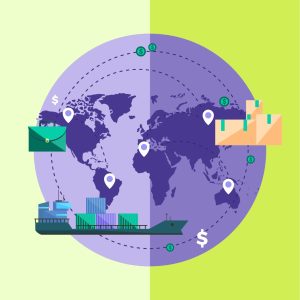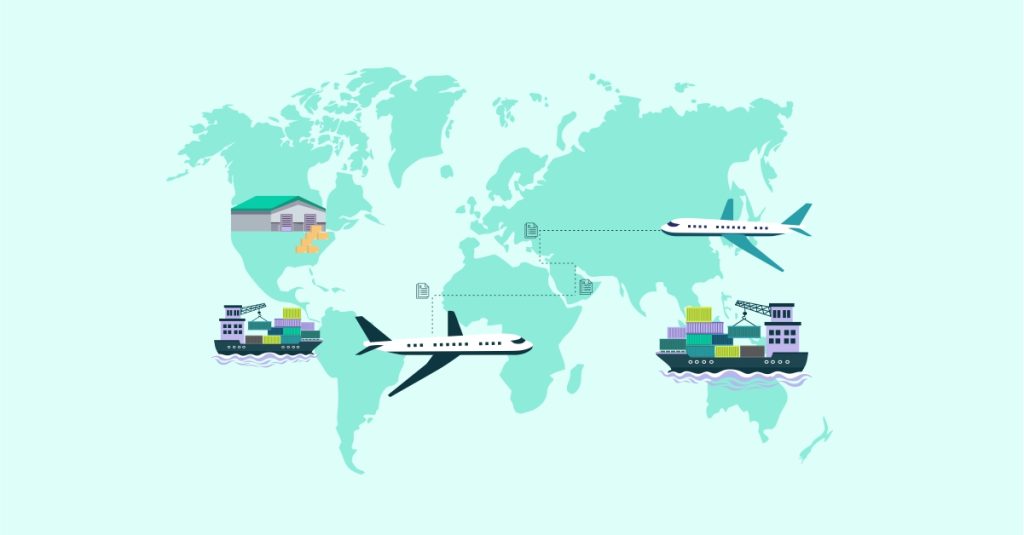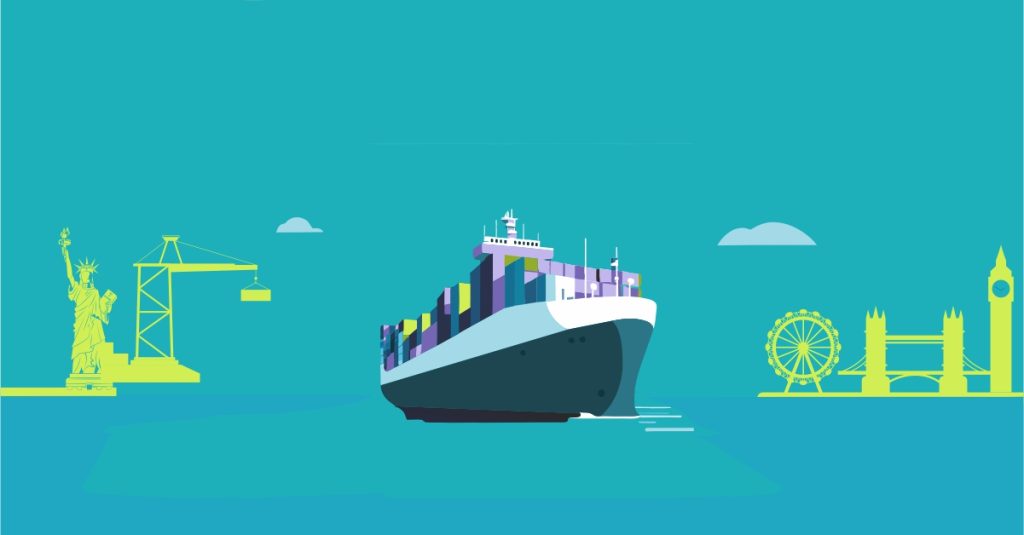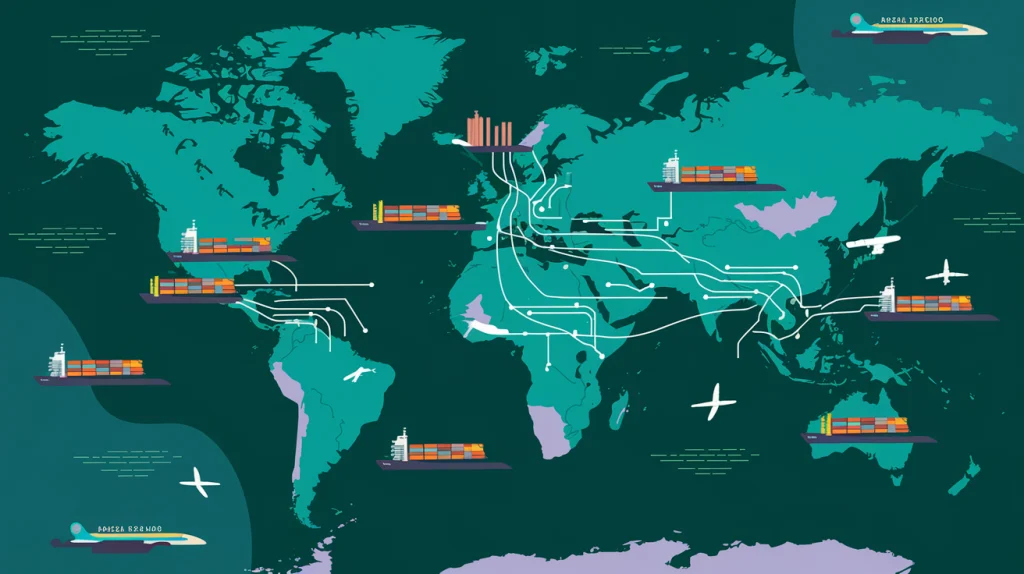Sea Freight Explained: A Practical Guide for Importers and Exporters
Sea freight might seem straightforward at first glance, but there’s more beneath the surface than meets the eye. As global trade keeps growing, knowing how to navigate ocean shipping can set your business apart. From cutting costs to reducing environmental impact, sea freight has plenty to offer. However, it also comes with its own set of challenges. Understanding the logistics, choosing the right containers, and managing risks are key to staying ahead in a competitive market. Whether you’re just starting out or looking to fine-tune your strategy, there’s always something new to learn about this vital mode of transportation.
Key Takeaways
- Sea freight is a budget-friendly option for shipping large volumes, particularly for heavy or oversized items.
- Cargo options include containers, break bulk, roll-on/roll-off, dry bulk, and liquid bulk.
- While sea freight takes longer than air freight, it offers more capacity and a smaller carbon footprint.
- Common challenges include weather-related delays, port congestion, customs hurdles, and security risks in certain areas.
- Selecting a dependable freight forwarder with solid services, responsive support, and modern technology is essential for success.
Introduction to Sea Freight
Sea freight is a key player in global trade, moving large quantities of goods across oceans. It’s a cost-effective choice for international shipping, particularly for heavy or bulky items like machinery and vehicles. Let’s mark some key points about sea freight, before we go into the details.
- Cost-Efficient: Typically four to six times cheaper than air freight.
- High Capacity: Perfect for transporting substantial amounts of cargo.
- Versatile: Suitable for a variety of cargo types and sizes.
- Eco-Friendly: Lower carbon footprint compared to other shipping methods.
To get started with sea freight, you’ll need to provide details about your cargo to a shipping company, including weight, type, and pickup location. While it’s not ideal for time-sensitive or perishable goods, sea freight is an excellent option for non-urgent shipments over 100 kg. For items that are dangerous or sensitive, special containers can ensure safe transport.

Benefits of Sea Freight Shipping
When weighing your shipping options, sea freight stands out for its variety of advantages. Its appeal lies in its ability to handle large volumes at a lower cost, while also being more environmentally friendly. Here’s a closer look at why sea freight might be the right choice for your business.
Cost-Effective Solution
Sea freight remains one of the most economical ways to ship goods internationally, especially when dealing with large volumes. Several factors contribute to its cost-effectiveness:
- Economies of Scale: Massive container ships can carry large volumes, spreading costs across more units.
- Fuel Efficiency: Ships use less fuel per ton of cargo compared to other transport modes, which helps keep expenses down.
- Competitive Market: The wide range of carriers and routes often leads to competitive pricing, benefiting your bottom line.
However, it’s essential to account for factors like port fees, surcharges, and the choice of container size, all of which can affect your total shipping costs.
Capacity for Large Quantities
Sea freight stands out for its ability to transport vast amounts of goods in a single journey, making it a top choice for businesses with high-volume shipping needs. Full container load (FCL) shipping, in particular, highlights this advantage, allowing companies to move large quantities efficiently and cost-effectively.
- Massive Capacity: Container vessels are capable of carrying thousands of containers at once, supporting large-scale shipments with ease.
- Flexibility in Sizes: Various container sizes are available to match different cargo volumes, from small batches to enormous consignments.
- Specialized Solutions: Options like break bulk shipping accommodate oversized or irregularly shaped items, while reefers (refrigerated containers) ensure the safe transport of temperature-sensitive goods.
By consolidating shipments, businesses can significantly reduce per-unit shipping costs, enhancing both supply chain efficiency and profitability. The ability to choose between FCL and less than container load (LCL) further adds to the flexibility, allowing you to tailor shipping options to your specific needs.
Environmental Friendliness
Sea freight isn’t just about moving goods—it’s also about doing so in an environmentally responsible way. Compared to other forms of transportation, sea freight offers a greener alternative that helps lower global emissions.
Energy Efficiency
Shipping by sea is significantly more fuel-efficient than road or air transport. Large vessels can move massive quantities of goods while consuming less fuel per ton, leading to lower overall emissions.
Economies of Scale
The capacity to transport vast amounts of cargo at once means fewer trips are needed, which directly reduces the carbon footprint of each shipment. The more goods a ship can carry, the smaller the environmental impact per item.
Green Innovations
The shipping industry is increasingly adopting alternative fuels like biofuels and hydrogen, along with electric power options, to further minimize environmental impact. Additionally, modern ships are designed with energy-efficient engines and streamlined hulls to cut down on greenhouse gas emissions.
Versatility in Cargo Types
One of the key strengths of sea freight is its ability to handle a wide variety of cargo types, making it a versatile choice for businesses across different industries.
Container Cargo
Standardized containers are ideal for transporting goods like electronics, textiles, and consumer products. These containers offer robust protection against the elements and are easily transferred between ships, trucks, and trains.
Break Bulk Cargo
For items that don’t fit into standard containers—like artwork, heavy machinery, or large vehicles—break bulk shipping is the solution. It allows for individual loading and handling, providing the flexibility needed for non-standard goods.
Roll-on/Roll-off Cargo
This method is perfect for wheeled cargo, such as cars, trucks, and construction equipment. Vehicles are driven directly onto the ship, making loading and unloading both efficient and safe.
Bulk Cargo
Sea freight is also equipped to handle bulk commodities. Dry bulk cargo, such as grains, coal, and cement, is transported loose without the need for packaging, while liquid bulk cargo, like oils and chemicals, is carried in specialized tankers designed for safe and secure transit.
Pitfalls of Sea Freight
While sea freight has numerous advantages, it’s crucial to be aware of its potential downsides.
Longer transit times, possible delays due to various factors, and weather-related risks are just some of the important considerations when planning your supply chain.
Longer Transit Times
Sea freight typically involves longer transit times compared to air freight, often ranging from 20 to 45 days depending on the route. This includes not only the ocean journey but also door-to-door delivery, customs clearance, and potential delays.
Typical transit times for popular routes are as follows:
- China to Australia: 25-35 days
- USA to Singapore: 15-25 days
- China to Europe: 30-45 days
- China to the UK: 35-45 days
- UK to Australia: 30-40 days
These timeframes can vary due to factors like geography, peak seasons, and customs procedures. Utilizing ocean freight tracking systems can help manage expectations by providing real-time updates on your shipment’s progress. Proper planning can help you integrate these timelines into your supply chain strategy effectively.
Potential for Delays
Delays can directly impact your shipping schedule and increase costs, so it’s crucial to understand the potential causes.
Port congestion is a common issue, particularly during peak seasons link or following major global events. Overcrowded ports can leave your cargo sitting idle for days or even weeks. Customs delays, often due to incomplete or incorrect documentation, are another frequent problem.
Other potential causes of delays include:
- Security Risks: Piracy and other security concerns in certain regions.
- Geopolitical Issues: Wars and conflicts that disrupt shipping routes.
- Global Events: Pandemics or natural disasters affecting logistics.
- Weather Conditions: Extreme weather that forces ships to change course.
- Holiday Schedules: National and international holidays impacting port operations.
These delays can also lead to detention fees if your cargo remains at the port beyond the allowed free time. To minimize the risk of delays, it’s important to plan for extended transit times, stay informed about global events, work with experienced freight forwarders link, and maintain clear communication with all parties involved.
Since weather and peak seasons are often the main causes of shipping delays, as a shipper, you should at least:
- Stay updated on weather forecasts that could impact your shipment.
- Choose carriers that use modern forecasting technology.
- Anticipate potential delays during peak seasons and adjust your schedule accordingly.
- Consider weather risks when packaging and insuring your cargo.
Packaging and Container Guidelines
To guarantee your goods arrive safely and securely, you’ll need to follow strict packaging and container guidelines for sea freight shipments. Proper packaging is vital in freight logistics, ensuring your cargo receipt matches the shipping contract and minimizing damages during transit.
When preparing your goods, use high-quality packaging materials to protect items, break down heavy packages into smaller units to avoid weight restrictions, pack containers tightly, fill empty spaces to prevent shifting, and accurately measure and declare package weights and dimensions.
For containerized shipping, comply with International Convention for Safe Containers (CSC) standards, adhere to International Maritime Organization (IMO) guidelines, respect maximum weight limits: 24,000 kg for 20-foot and 30,480 kg for 40-foot containers, and utilize standardized container sizes: 20-foot (1 TEU) and 40-foot (2 TEU).
Proper labeling is essential. Include consignee and shipper details, clearly mark cargo descriptions, add relevant handling instructions, and use international, standardized shipping marks.
Sea Freight vs. Air Freight
While sea freight offers significant benefits, it’s important to know when air freight might be the better option. The choice between sea and air freight often comes down to three main factors: cost, speed, and the nature of your goods. For larger shipments that aren’t time-sensitive, sea freight is typically the more economical option. However, when shipping high-value or perishable goods, or when delivery speed is critical, air freight becomes a strong contender. Let’s break down the key differences to help you decide which option best suits your needs.
Cost Comparison
When it comes to cost, sea freight generally holds the advantage, especially for large or heavy shipments. On average, sea freight can be up to 60% less expensive than air freight, making it the preferred choice for businesses looking to ship bulk commodities, non-urgent goods, and oversized items.
However, air freight may offer better value under certain circumstances:
High-Value Goods: The higher cost of air freight can be offset by the need to quickly transport valuable items, reducing the risk of loss or damage.
Perishable Items: For goods that require fast delivery, such as fresh produce or pharmaceuticals, air freight is essential to maintain product integrity.
Urgent Shipments: When speed is crucial to avoid production downtime or meet tight deadlines, air freight is often worth the extra cost.
Like sea freight, air freight, while faster, comes with its own set of costs like airport handling fees. Freight forwarders can help navigate these complexities and might be able to negotiate better rates based on service levels, fuel prices, and seasonal demand.
Speed and Transit Time
Air freight excels when it comes to speed. If your main goal is to move goods from one place to another quickly, air freight usually takes just 5-7 days. This makes it a great option for time-sensitive shipments where any delay could result in major financial losses. In comparison, sea freight typically takes 3-6 weeks.
Suitability for Different Goods
The nature of your goods is another critical factor in choosing between sea and air freight. Sea freight is well-suited for large, heavy, and non-perishable items that can endure longer transit times without compromising quality. This includes:
- Bulk Commodities: Items like grain, minerals, and oil, which are shipped in large quantities.
- Industrial Equipment: Machinery and heavy vehicles that require specialized handling.
- Household Goods: Furniture and other bulky items that are expensive to ship by air.
- Non-Perishable Consumer Goods: Items such as clothing, electronics, and toys that do not require rapid delivery.
Air freight, however, is better suited for:
- Perishables: Goods like fresh produce, flowers, and pharmaceuticals that need fast delivery to remain viable.
- High-Value Items: Electronics, luxury goods, and jewelry, where speed and security are paramount.
- Urgent Shipments: Any items where timing is critical, such as spare parts needed to avoid production downtime.
How to Choose the Right Sea Freight Service Provider
To make an informed choice, it’s important to evaluate several key factors, ensuring that the provider aligns with your business needs and goals.
Evaluating Service Providers
Choosing a sea freight service provider involves a careful assessment of multiple aspects. Here’s what to consider:
Service Coverage and Network
A provider’s serviceability and network reach are fundamental. Verify their ability to cover your required destinations, both domestically and internationally. Ensure they have experience handling various cargo types and can manage shipments of different sizes and complexities.
Company Credentials and Expertise
The provider’s industry reputation and credentials matter. Look into any awards or recognition they’ve received, as well as their track record in the industry. Evaluate the expertise of their management team and their commitment to staying updated with industry advancements.
Range of Logistics Services
A comprehensive range of logistics services is a significant advantage. Check whether the provider offers not just sea freight, but also complementary services like air, rail, or road transport. Warehousing capabilities and experience with handling specialized cargo are also important factors.
Customer Support and Communication
Strong customer support is essential for a smooth shipping experience. Assess the provider’s responsiveness and the communication channels they offer. Real-time tracking and regular updates on your shipment’s status can make a big difference in managing your supply chain effectively.
Technology and Infrastructure
The use of modern technology is a key differentiator among service providers. Review their tracking and monitoring systems to ensure they offer transparency and reliability. Automation and digital tools can also enhance efficiency and accuracy in handling your shipments.
Compliance and Regulations
Regulatory compliance is critical in international shipping. Ensure the provider adheres to all relevant laws and regulations, including customs requirements and any restrictions on certain types of goods. Their understanding of global trade laws can prevent costly delays and legal issues.
Cost and Pricing Structure
Cost is always a consideration, but it shouldn’t be the only factor. Compare pricing structures and check if they offer value for money. Transparent pricing with no hidden fees is essential, and tools like rate calculators can help you estimate costs accurately.
Reputation and Reliability
Last but not least, research the provider’s reputation and reliability. Customer reviews and testimonials can offer insights into their performance and customer satisfaction. A reliable provider should have a history of delivering on their promises and maintaining strong client relationships.
Our Sea Freight Services
At Unicargo, we take pride in being a leading sea freight service provider, offering a comprehensive range of ocean freight solutions tailored to meet your specific needs. Our expertise in aligning customer requirements with the best shipping options sets us apart in the industry.
With Unicargo, you have access to a variety of services, including:
- Full Container Load (FCL): Ideal for large shipments requiring full containers.
- Less Than Container Load (LCL): Perfect for smaller consignments where you share container space with others.
- Specialized Project Cargo: We handle oversized or complex shipments that require special care.
- Importer of Record (IOR) Services: We manage all compliance and regulatory requirements, ensuring your shipments clear customs smoothly and legally in any country.
- Amazon Prepping: We handle the specific packaging, labeling, and shipping requirements for Amazon, ensuring your goods are ready for FBA (Fulfillment by Amazon).
One of the key benefits of working with Unicargo is having a single point of contact to manage your entire supply chain. From sea freight to air freight, warehousing, and last-mile delivery, we oversee every step of the process, providing you with a seamless experience. This holistic approach ensures efficiency, reduces the risk of errors, and saves you time and effort. Additionally, we offer insurance options to protect your cargo.
When you choose Unicargo, you’re partnering with a provider that not only prioritizes reliability, advanced technology, and customer satisfaction but also offers a fully integrated supply chain solution. This makes us the top choice for businesses with diverse and complex shipping needs.

The Future of the Sea Freight Industry
Looking ahead to 2050, the sea freight industry is set for profound transformations, driven by technological advancements, sustainability efforts, and changing global trade dynamics. Despite these changes, sea freight will continue to be the backbone of global trade, handling around 80% of the world’s cargo.
Key Trends Shaping the Future
As the industry evolves, several significant shifts are expected:
- Adapting Cargo Types and Vessel Designs: Vessels will be redesigned to handle new types of cargo, catering to emerging industries and products that require specialized transport solutions.
- Slower Growth in Trade Volumes: While global trade will continue to expand, the rate of growth in total trade volume and the size of the merchant fleet is expected to slow compared to past trends.
- Emphasis on Sustainability: The industry will increasingly focus on circular economies and sustainable practices, reducing environmental impact and promoting long-term viability.
- Artificial Intelligence and Automation: AI will play a crucial role in optimizing shipping routes, improving fuel efficiency, and enhancing decision-making processes. Autonomous vessels and AI-driven logistics systems will streamline operations, reduce human error, and increase overall efficiency.
The Energy Transition
A major driver of change in the sea freight industry will be the ongoing energy transition:
- Decline in Fossil Fuels: The demand for coal and oil will decrease, followed by a gradual reduction in the use of natural gas, leading to changes in the types of cargo transported and the energy sources used by vessels.
- Growth in Renewable Energy Support: The expansion of offshore wind farms and other renewable energy projects will require new types of support vessels and infrastructure, reshaping port and shipyard operations to accommodate these needs.
Climate-Conscious Shipping
As environmental concerns take center stage, the sea freight industry will adopt a more climate-conscious approach:
- The Blue Economy: The maritime sector will play a crucial role in the Blue Economy, balancing economic growth with the sustainable use of ocean resources.
- Technological Advancements: Innovations in ship design, fuel efficiency, AI, and digitalization will lead to a more efficient and environmentally friendly shipping industry.
Adapting to New Realities
Although the pace of growth may slow, the sea freight industry will continue to adapt to new challenges and opportunities. The integration of AI, focus on sustainability, and advancements in technology will ensure that sea freight remains a vital and resilient component of global trade in the coming decades.
Conclusion
Sea freight is a complex system with many moving parts, requiring careful management and expertise. From coordinating large shipments to handling intricate logistics, the process demands thorough attention and a solid understanding of international trade.
Selecting the right partner can significantly impact how effectively these challenges are managed. Unicargo brings the experience and comprehensive services necessary to oversee every aspect of your sea freight operations. Whether it’s ensuring smooth deliveries, managing customs requirements, or handling specialized cargo, Unicargo offers the expertise to keep your supply chain on track.
As you refine your shipping strategies, consider the advantages of working with a partner who can handle the complexities of global trade and provide the dependable support your business needs to thrive. We’d love to hear about your specific challenges—let’s talk and explore how we can support your business.


